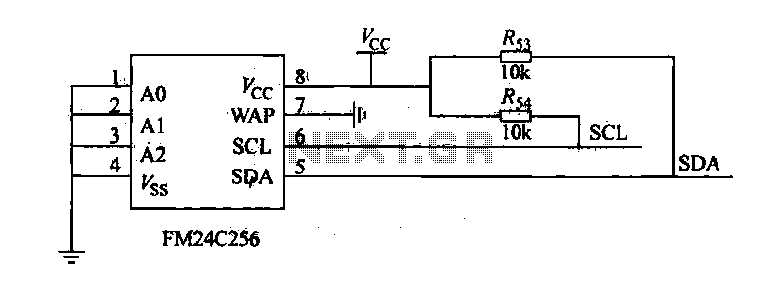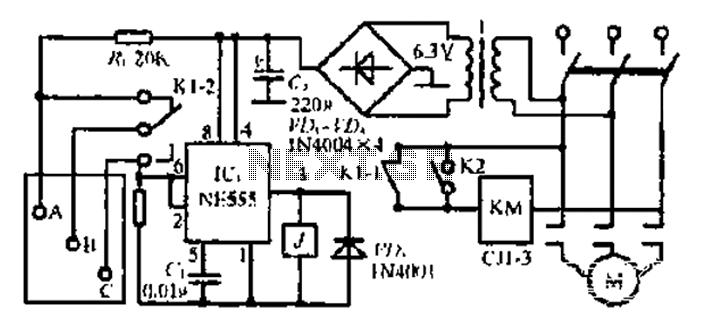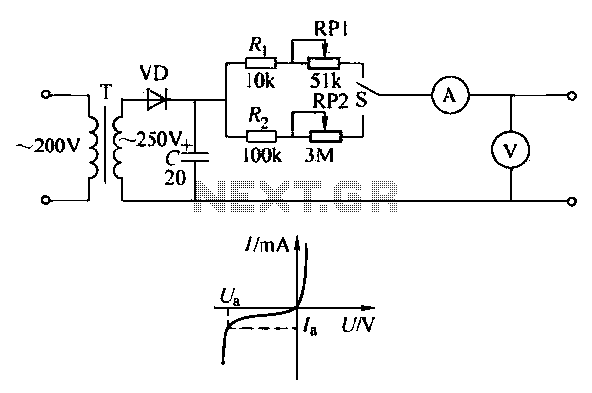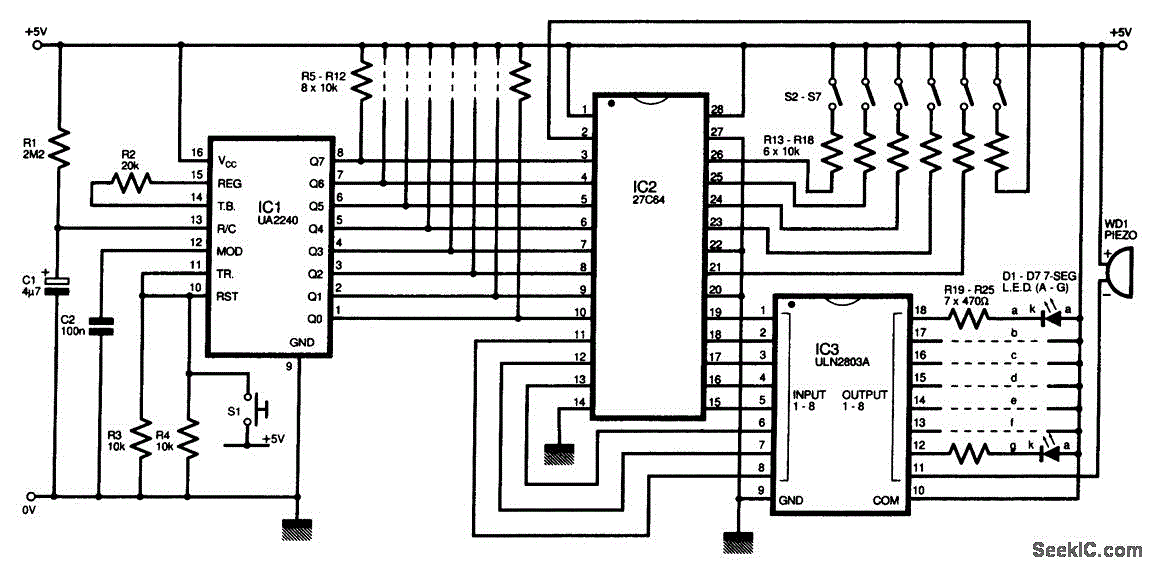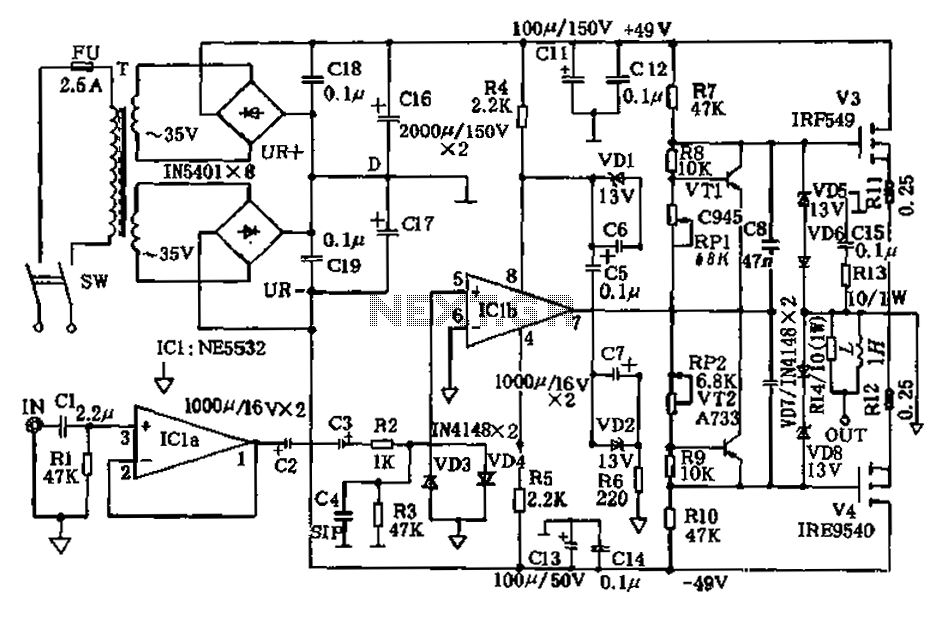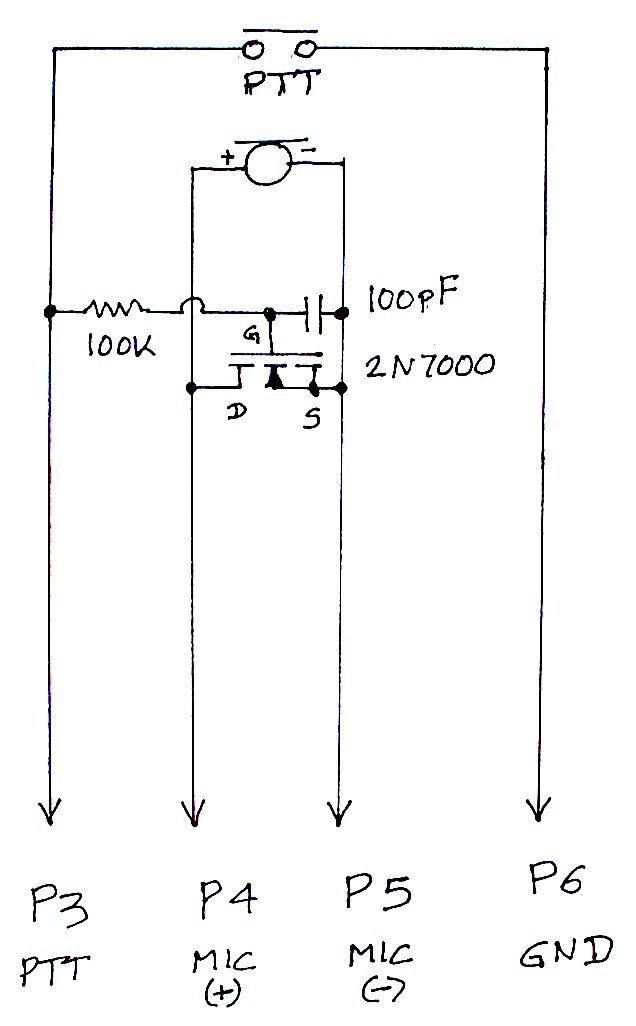
Watch Timer circuit
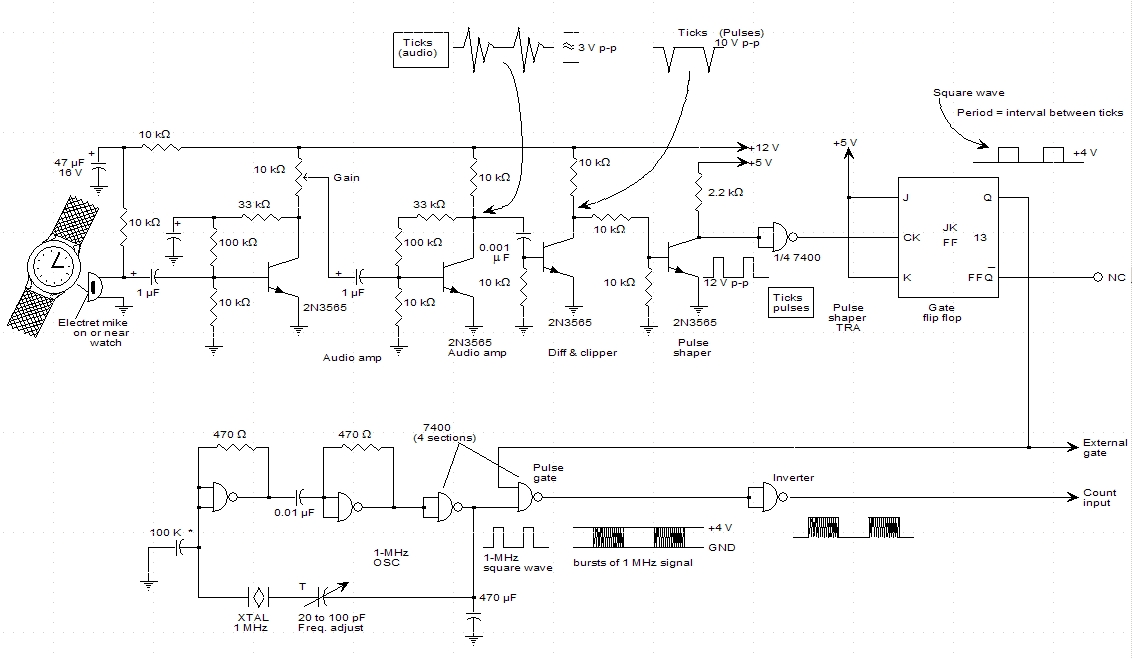
A schematic for a watch timer was found in a hobby electronics book. The circuit adapts a frequency counter to measure intervals. Watch ticks are clipped, shaped, and formed into a square wave. This square wave is utilized to gate an accurately known clock (1 MHz TTL crystal oscillator), and an external counter is employed to directly count the clock pulses.
The described circuit serves as a timer that leverages the precision of a frequency counter to measure time intervals based on the ticks of a watch. The process begins with the detection of the watch ticks, which are typically analog signals. These signals are then processed through a clipping and shaping stage to convert them into a clean square wave. This transformation is critical as it ensures that the frequency counter receives a signal that is suitable for accurate measurement.
The square wave generated from the watch ticks is used to control the gating of a 1 MHz TTL (Transistor-Transistor Logic) crystal oscillator. The oscillator serves as a stable and accurate time reference. By using a TTL crystal oscillator, the circuit benefits from low power consumption and high reliability, which are essential characteristics for hobby electronics projects.
An external counter is integrated into the system to tally the number of clock pulses produced by the oscillator during the time intervals defined by the watch ticks. This external counter can be any digital counter capable of handling the frequency output from the oscillator. The output from the counter can then be displayed on a digital readout or used for further processing, depending on the design requirements.
In summary, this circuit design effectively combines the principles of frequency counting and signal processing to create a functional watch timer. Its simplicity and reliance on widely available components make it an attractive project for hobbyists looking to deepen their understanding of electronics and timing circuits.Hello all, I ran across this schematic for a watch timer in a hobby electronics book. Anyone built something like this before? My knowledge of electronics is somewhat limited. Here is the description: ""This circuit adapts a frequency counter to measure intervals, watch ticks are clipped and shaped and formed into a square wave. This square wave is used to gate an accurately known clock (1 Mhz TTL XTAL OSC) and an external counter is used to directly count the clock pulses during the..
🔗 External reference
The described circuit serves as a timer that leverages the precision of a frequency counter to measure time intervals based on the ticks of a watch. The process begins with the detection of the watch ticks, which are typically analog signals. These signals are then processed through a clipping and shaping stage to convert them into a clean square wave. This transformation is critical as it ensures that the frequency counter receives a signal that is suitable for accurate measurement.
The square wave generated from the watch ticks is used to control the gating of a 1 MHz TTL (Transistor-Transistor Logic) crystal oscillator. The oscillator serves as a stable and accurate time reference. By using a TTL crystal oscillator, the circuit benefits from low power consumption and high reliability, which are essential characteristics for hobby electronics projects.
An external counter is integrated into the system to tally the number of clock pulses produced by the oscillator during the time intervals defined by the watch ticks. This external counter can be any digital counter capable of handling the frequency output from the oscillator. The output from the counter can then be displayed on a digital readout or used for further processing, depending on the design requirements.
In summary, this circuit design effectively combines the principles of frequency counting and signal processing to create a functional watch timer. Its simplicity and reliance on widely available components make it an attractive project for hobbyists looking to deepen their understanding of electronics and timing circuits.Hello all, I ran across this schematic for a watch timer in a hobby electronics book. Anyone built something like this before? My knowledge of electronics is somewhat limited. Here is the description: ""This circuit adapts a frequency counter to measure intervals, watch ticks are clipped and shaped and formed into a square wave. This square wave is used to gate an accurately known clock (1 Mhz TTL XTAL OSC) and an external counter is used to directly count the clock pulses during the..
🔗 External reference
